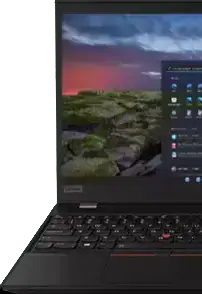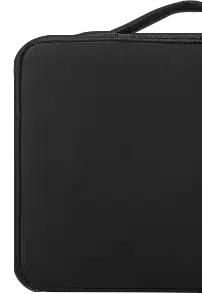What is portable network graphics (PNG)?
PNG is a format for storing images, which includes support for lossless data compression. This means when you save an image as a PNG, you won't lose any image quality, regardless of how many times you open and save the file. It's particularly useful for images on the internet because it supports transparency in browsers, allowing for the overlay of web graphics on different backgrounds.
Can PNG files be animated like graphics interchange formats (GIFs)?
Yes, there is an extension of the PNG format known as animated portable network graphics (APNG) that supports animation. While it hasn't seen the same level of adoption as GIFs, it allows for better color support and alpha transparency, which means you can have smooth animations with semi-transparent pixels, leading to a much cleaner appearance in comparison to GIFs. However, keep in mind that not all browsers or image viewers support APNG.
What makes PNG different from joint photographic experts group (JPEG)?
PNG and JPEG are both image formats, but they serve different purposes. JPEG is best suited for photographic images and does allow for a varying degree of lossy compression which makes the file sizes smaller, but at the expense of image quality. PNG, on the other hand, was created as a lossless alternative. It keeps the image quality intact, which is perfect for logos, text, and graphics with sharp edges. Plus, PNG supports transparency, which JPEG does not.
Does PNG support transparency?
Yes, one of the biggest advantages of PNG is its support for transparency. You can have varying levels of transparency (alpha channel), from fully opaque to completely transparent. This is why PNGs are often used for logos, icons, and design elements on websites, as they can blend seamlessly with different backgrounds.
Could I use PNG for professional printing?
While you can use PNG files for professional printing, they're not typically the best choice. PNGs are ideal for the web, but print work often requires higher resolutions and color accuracy that formats like tagged image file format (TIFF) or photoshop document (PSD) offer. Also, PNG does not support cyan, magenta, yellow, key (CMYK) color models which are standard in professional printing. You might want to convert your PNG to a format that's more suitable for printing.
What happens if I try to enlarge a PNG image?
If you enlarge a PNG, you might notice the image becoming pixelated or blurry. This is because PNGs, like all bitmap images, are made up of a fixed number of pixels. When you enlarge the image, the pixels are stretched, and the software interpolates to fill in the gaps, often resulting in a loss of detail and clarity.
Does PNG compression affect image quality?
The compression used in PNG is lossless, meaning it reduces file size without affecting the quality of the image. You can open and save a PNG image multiple times without degrading its quality. This contrasts with lossy compression formats like joint photographic experts group (JPEG), where quality can decrease each time, the image is saved.
When should I use PNG instead of other image formats?
You should use PNG when you need high-quality images with transparency on the web, such as logos or interface elements. It's also useful for images that are edited frequently, as it doesn't lose quality with re-saving. Avoid using PNG for photographs on the web due to the larger file sizes compared to joint photographic experts group (JPEG). For professional printing, other formats like tagged image file format (TIFF) are more suitable.
Can I protect a PNG image from being copied or altered?
While you can't completely prevent a PNG image from being copied or altered once it's been shared, you can take measures like adding watermarks or using digital rights management (DRM) on the platform where you share the image.
How do I reduce the file size of a PNG image?
To reduce the file size of a PNG image without losing quality, you can use an image optimizer. These tools typically remove unnecessary metadata and apply efficient compression techniques. You can also decrease the number of colors in the image or lower its resolution, although this can affect the image's appearance. Online tools and software can perform this task effectively.
Does PNG support metadata like camera settings or location data?
Yes, PNG can store metadata such as camera settings, the time the image was created, and copyright information. However, unlike formats such as joint photographic experts group (JPEG) or tagged image file format (TIFF), PNG does not support exchangeable image file format (EXIF) data, which includes extensive camera settings and location data captured by digital cameras. If you need to preserve or edit this type of metadata, you may need to consider a different format.
What's the difference between PNG-8 and PNG-24?
PNG-8 and PNG-24 refer to different color depths. PNG-8 uses 8 bits per pixel, allowing for up to 256 colors, which makes it more suitable for simpler images like icons or logos with limited color palettes. PNG-24, on the other hand, uses 24 bits per pixel, which allows for millions of colors, making it ideal for complex images like photographs. However, PNG-24 files will generally be larger than PNG-8 files.
Can PNG handle grayscale images well?
Yes, PNG is quite capable when it comes to handling grayscale images. It can store images with bit depths of 1, 2, 4, 8, or 16 bits per pixel, which provides a good range of grayscales. This makes it a good choice for graphic design, where various shades of gray are required without color.
How does PNG handle color accuracy?
PNG uses truecolor, allowing for up to 16 million colors, which is often more than enough for accurate color representation in digital images. It's particularly good for web graphics, as it ensures colors are reproduced accurately on different displays. However, because it doesn't support the cyan, magenta, yellow, key (CMYK) color model, there are better choices for tasks where print color accuracy is critical.
Can I recover a PNG file that I accidentally deleted?
If you've accidentally deleted a PNG file, it might be recoverable as long as the space it occupied on your storage medium hasn't been overwritten by new data. You can use file recovery software to scan for and restore deleted files. The success of this process depends on how quickly you act after deletion and the usage of your storage device.
How do I know if PNG is high resolution?
You can determine if a PNG is high resolution by checking its pixel dimensions and its resolution, usually measured in pixels per inch (PPI). A higher PPI and larger pixel dimensions typically indicate a higher resolution image. For web purposes, resolution is less of a concern than actual dimensions, but for print, a resolution of at least 300 PPI is often recommended for high-quality results.
Why do some websites prefer PNG over other formats?
Websites might prefer PNG because it offers lossless compression, ensuring that images maintain their quality no matter how often they're saved and resaved. The support for transparency allows for sleek overlays and complex images that blend smoothly with various backgrounds. Additionally, the widespread support across different web browsers and devices makes PNG a reliable choice for web designers.






